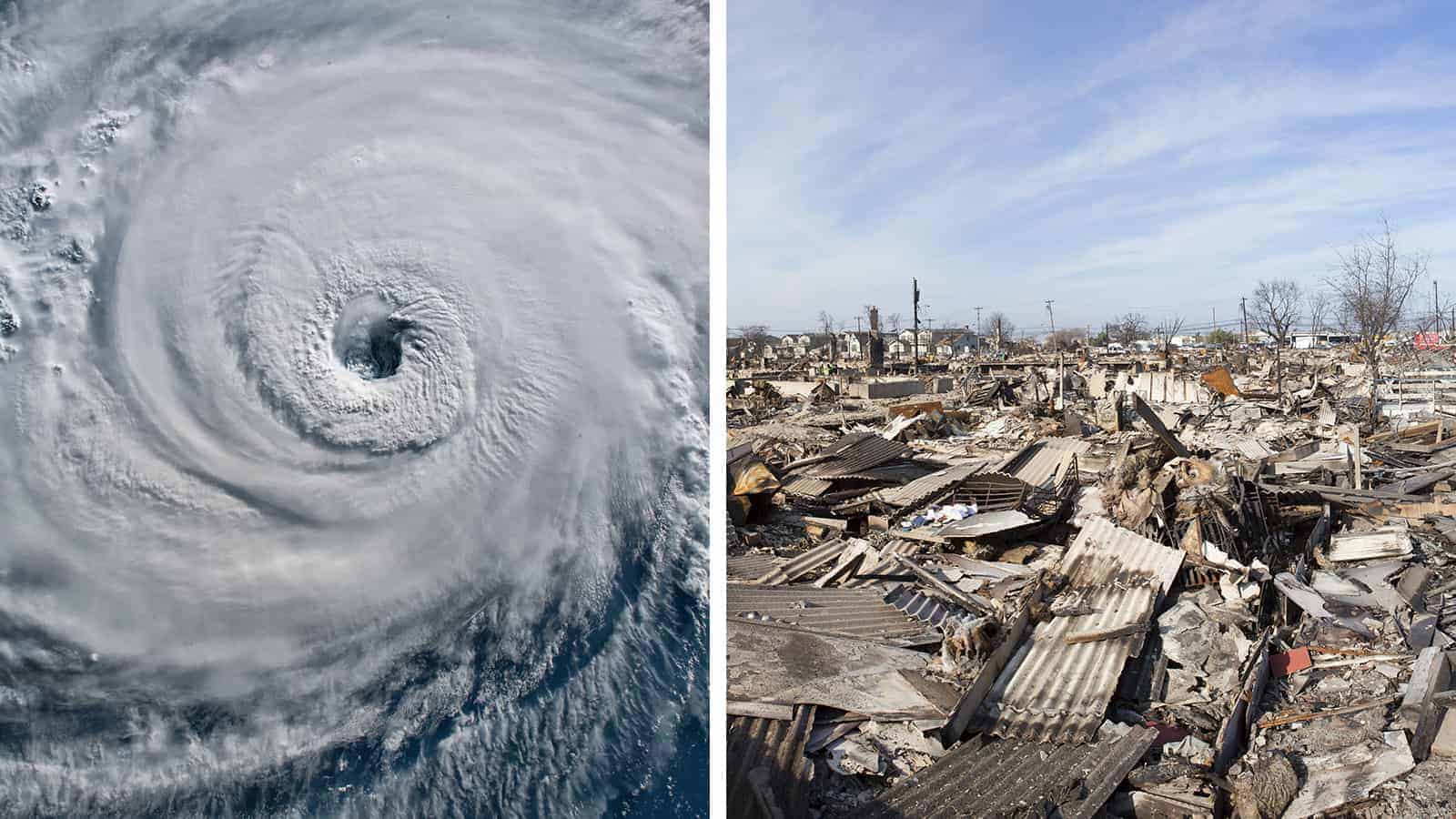Climatologists have found that tropical systems have become much stronger in recent years, thanks to climate change. Not only do hurricanes take more time to weaken after making landfall, but they intensify faster and dump more rain than usual.
A study published in the journal Nature on November 11, 2020, revealed that recent hurricanes carry more moisture due to warming oceans. Therefore, they retain strength for longer periods of time after hitting land.
Climate experts believe that warming oceans will only cause storm systems to become more intense in the future. The scientists project that future storms will impact communities further inland and cause even more destruction. Roofing damages caused by extreme weather conditions should be fixed immediately. If your home has roof leaks that need to be repaired, you should consider hiring a professional roofing contractor. Seek Affordable Remediation & Emergency Services if your property has been flooded and you need help with water removal and damage repairs.
“The implications are very important, especially when considering policies that are put in place to cope with global warming,” said Professor Pinaki Chakraborty, senior author of the study and head of the Fluid Mechanics Unit at the Okinawa Institute of Science and Technology Graduate University (OIST). “We know that coastal areas need to ready themselves for more intense hurricanes, but inland communities, who may not have the know-how or infrastructure to cope with such intense winds or heavy rainfall, also need to be prepared.”
Climatologists have already established associations between global warming and hurricane intensity. However, they have done little research into how climate change impacts the rate at which tropical storms weaken. This groundbreaking research reveals how tropical systems have been slowing down in recent decades.
Warming oceans causing stronger hurricanes
The scientists analyzed North Atlantic landfalling hurricanes in the past 50 years. They discovered a direct correlation between the slowdown of storms and warming ocean temperatures. On the first day after landfall, scientists found that storms weakened almost twice as slowly as they did in the 1960s. Back then, hurricanes lost about 75 percent of their intensity 24 hours after landfall. But now, they lose only 50 percent.
 “When we plotted the data, we could clearly see that the amount of time it took for a hurricane to weaken was increasing with the years. But it wasn’t a straight line — it was undulating — and we found that these ups and downs matched the same ups and downs seen in sea surface temperature,” said Lin Li, first author and Ph.D. student in the OIST Fluid Mechanics Unit.
“When we plotted the data, we could clearly see that the amount of time it took for a hurricane to weaken was increasing with the years. But it wasn’t a straight line — it was undulating — and we found that these ups and downs matched the same ups and downs seen in sea surface temperature,” said Lin Li, first author and Ph.D. student in the OIST Fluid Mechanics Unit.
The researchers created computer simulations of four different storms to test the association between warmer oceans and slower weakening hurricanes. They set different sea surface temperatures for each to see how the hurricanes would react. Once the simulated hurricanes became Category 4’s, they cut off moisture supply from beneath to create landfall.
Li explained: “Hurricanes are heat engines, just like engines in cars. In car engines, fuel combusts, and that heat energy is converts into mechanical work. For hurricanes, the moisture taken up from the ocean’s surface is the “fuel” that intensifies and sustains a hurricane’s destructive power, with heat energy from the moisture converted into powerful winds.
“Making landfall is equivalent to stopping the fuel supply to the engine of a car. Without fuel, the car will decelerate, and without its moisture source, the hurricane will decay.”
The study results
The simulations revealed that storms developing over warmer waters took longer to weaken, despite them all having equal intensity at landfall. Professory Chakraborty says that this proved their theory that warmer oceans cause storm systems to weaken more slowly, even after they hit land. However, they still didn’t know why this occurred.
Additional simulations revealed that “stored moisture” caused the hurricanes to retain strength longer. The scientists explained that storms carry a slowly depleting stock of moisture once they make landfall. So, even though they can’t draw moisture from the oceans any longer, they already have so much potential energy stored.
Scientists found that sea surface temperatures had no impact on the virtual hurricanes, which had no stored moisture. The tropical storms weakened at a normal rate when they lacked this accumulation of moisture.
“This shows that stored moisture is the key factor that gives each hurricane in the simulation its own unique identity,” said Li. “Hurricanes that develop over warmer oceans can take up and store more moisture, which sustains them for longer and prevents them from weakening as quickly.”
Future implications
Because recent storms contain more moisture, they consequently dump more rain on affected areas. Coastal and inland communities have seen unprecedented amounts of rainfall in tropical storms and hurricanes. For example, Hurricane Harvey hit Texas in 2017, with scientists noting it as the wettest Atlantic hurricane ever recorded. Some areas saw up to 60” of rain in a matter of days.
Since storms have increased in intensity and moisture levels, future climate models need to consider stored moisture. Warming oceans have dramatically altered the behavior of hurricanes, and this research shows the importance of models keeping pace.
Furthermore, the research highlights the shortcomings in simple theoretical models most commonly used to analyze hurricane decay.
“Current models of hurricane decay don’t consider moisture — they just view hurricanes that have made landfall as a dry vortex that rubs against the land and is slowed down by friction. Our work shows these models are incomplete, which is why this clear signature of climate change wasn’t previously captured,” said Li.
More research lies ahead
The scientists now want to study hurricane data worldwide to determine how global warming affects hurricane decay elsewhere.
Prof. Chakraborty said: “Overall, the implications of this work are stark. If we don’t curb global warming, landfalling hurricanes will continue to weaken more slowly. Their destruction will no longer be confined to coastal areas, causing higher levels of economic damage and costing more lives.”
 Final thoughts on the groundbreaking study about strengthening hurricanes
Final thoughts on the groundbreaking study about strengthening hurricanes
Global warming and climate change have led to tropical storms becoming more costly and dangerous. Warming oceans have caused storms to store more moisture, resulting in heavier rainfall and slower decay once they make landfall. Furthermore, hurricanes have become stronger and intensify faster due to climate change. These factors will lead to more people reeling from the consequences of storms in the future if warming trends continue.


















